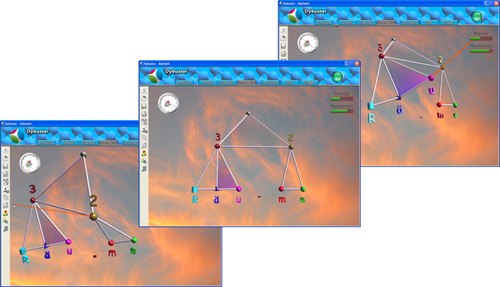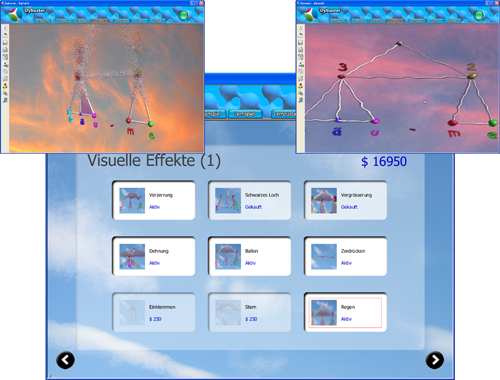Dybuster - Ein adaptives, multi-modales Therapiespiel für Legastheniker
G.-M. Baschera, M. GrossProceedings of Spielend Lernen (Rostock, Germany, October 13-14, 2010), Fraunhofer Verlag, pp. 85-93
Abstract
Wir stellen ein multi-modales Therapiespiel für Legastheniker vor. Das Training der Rechtschreibung wird unterstützt durch multi-sensorische Lernhilfen, welche recodierte Information über die Orthographie enthalten. Die Computerspiel-ähnliche Lernumgebung, mit 3D Graphik und Interaktionskomponenten, erlaubt ein Eintauchen in die spielerische 3D-Welt. Zusätzlich kann während dem Training durch korrekte Eingaben virtuelles Geld gesammelt werden, welches dem Benutzer erlaubt im Shop verschiedene Items, wie Hintergrundbilder und visuelle Effekte, zu erwerben. Die Software wurde mit einem Phonem-basierten Benutzermodell erweitert und in zwei Benutzerstudien evaluiert.Overview
In the field of serious games, computer games are used to mediate educational content. The spelling software Dybuster, developed for dyslexic children, uses a different approach. The multi-modal spelling learning environment is enriched by computer game like elements to enhance the motivation for training. E.g., the deformable 3D-graph, visualizing the syllabic structure of the word, allows for an interaction with the multi-modal visualization of information and let children work in a more familiar learning environment (see Figure 1). Children perceive the software rather as a computer game than a spelling trainer.
Additionally, children obtain points for the correct entry of prompted words, which are converted into virtual money in certain intervals. In a virtual shop, this money can be used to buy various items (see Figure 2). These include different backgrounds, visual effects displayed after correctly entered words or different instruments playing the melody computed for each word. This shop concept makes use of the drive to collect items, well known from commercial games such as Diablo or World of Warcraft.
Results
We were able to show that the motivation enhancing elements of Dybuster are reflected in long training times during the study. Even children with dyslexia, which often have strong aversions against spelling training, were able to get motivated. This also manifested in a significant improvement of the spelling abilities.



